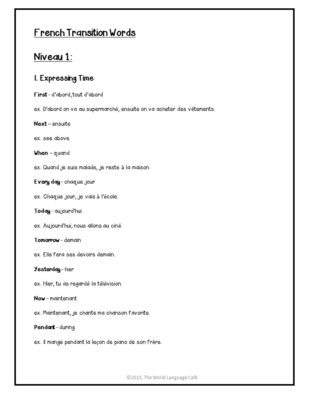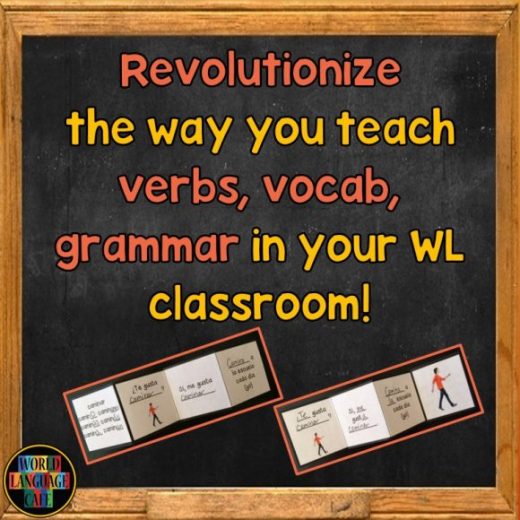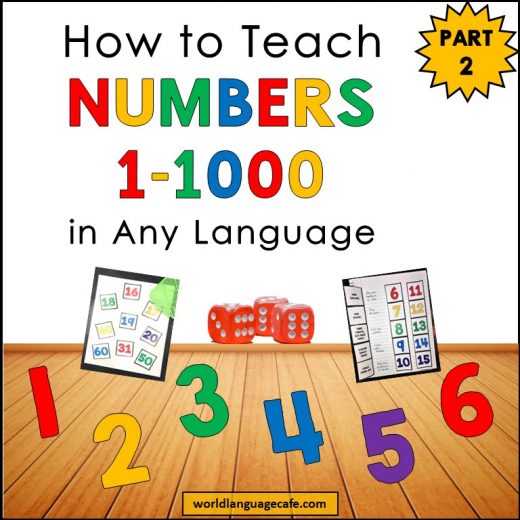In my last post about how to teach writing in French, I shared tips about the importance of providing templates for your lower-level language students. This next post will teach you how to use lists of French transition words, to drastically improve student writing.
I don’t know about you, but those short, choppy sentences drive me nuts when I’m correcting essays or presentations. If only they knew how to use transition words . . . .
When I was a language student writing my own compositions and essays, I was always searching for good transition words to help me write more fluently. This is something that we were very rarely taught but would have been so helpful.
As a language teacher, I spent so much time teaching my students how to write longer sentences to make their compositions better. After I got their compositions back, I would write sample sentences on the board and show them how to combine the sentences using a few key transition words.
But why did I wait until after they had failed to show them how to succeed? That just doesn’t make sense and led to frustration on my part and on their parts!!
To alleviate this writing problem, I created lists of 101 French transition words.

French Transition Words
As the years passed, these lists evolved into leveled lists for beginners, intermediate learners, and advanced learners with sample sentences for each one so they could see how each would be used in a sentence. They look like this.
Levels 1 + 2 get List #1, which includes basic transition words.
I divide my transition words into the following categories:
- Expressing Time (first, next, later, 2 days ago, afterward, sometimes, in the morning, at night)
- Adding Additional Information (for example, in addition, normally)
- Combining Short Sentences into Longer Sentences (but, so, also, too, still, however)
- Concluding (finally, in conclusion, lastly, in the end)
Level 3 gets List #2, more advanced transition words
- Time (at the beginning, suddenly, at that moment, a little while later)
- Expressing Opinions (in my opinion, according to, in fact, for the most part, therefore)
- Additional Helpful Expressions (at least, instead of, thanks to, without)
Levels 4 + 5 get List #3, college-level transition words:
- Time (back then, nowadays, since, already)
- Expressing Opinions (it’s important that, to a large extent, given that, despite, on one hand)
- Conditions (in order to, so that, provided that, even if)
- Comparing and Contrasting (in contrast to, similar to, different from, the same as)
- Consequences (upon seeing, as a result of, consequently, due to)
These leveled lists are a great way to differentiate within your classroom. If your more advanced students and high achievers are looking for more, give them a more advanced list.
You’ll be amazed by the progress in their writing, just by incorporating these handy transition words.
There are a variety of ways to make these lists:
- Make your own lists with key transition words.
- Have students keep 2 pages in their notebooks for transition words. When you come across one in your teaching, have them write down the word, the meaning, and a sample sentence.
- Get ready-made French transition word lists to print and hand out for student reference.
-

French Transition Words
Hope these French transition words tips were helpful.
Want more tips for teaching French writing? Check out the other posts in this series about writing:
* Teaching French Writing Using Templates
* 25 Awesome Writing Activities for French Students.
Happy Teaching!
~Sherry

World Language Cafe – French and Spanish Lesson Plans





No Comments